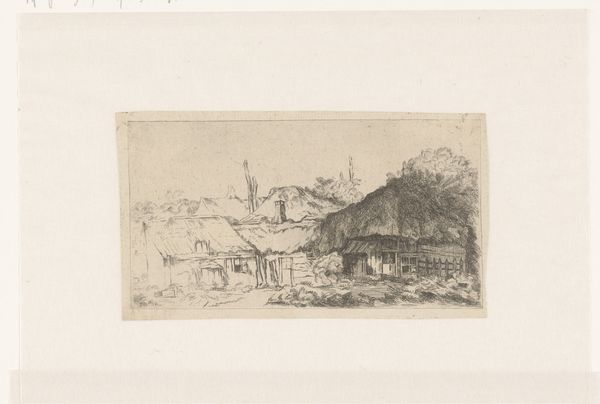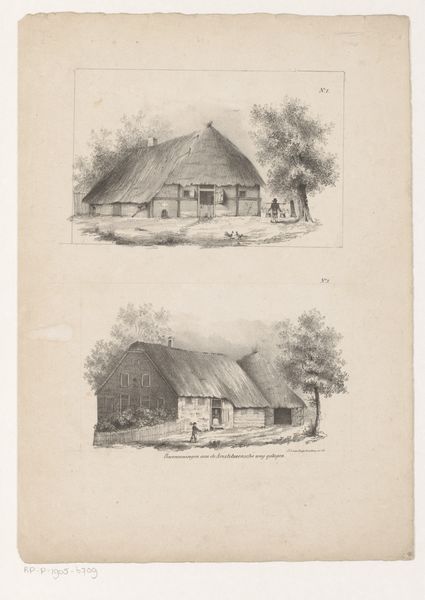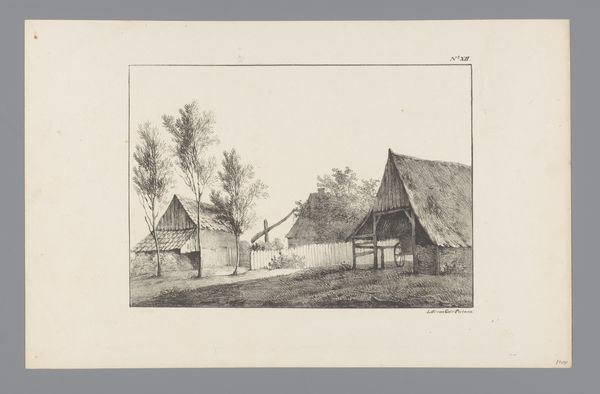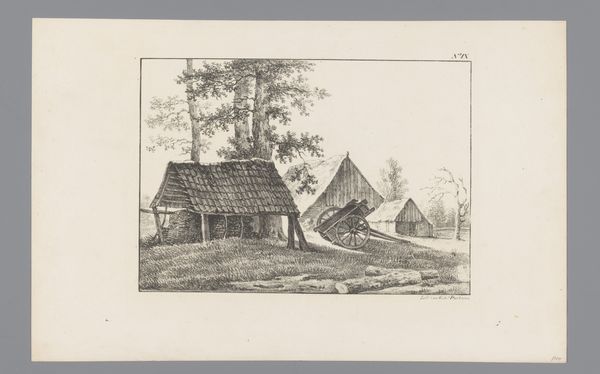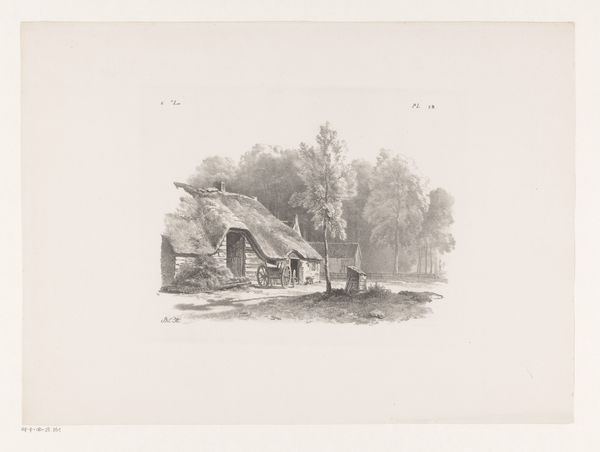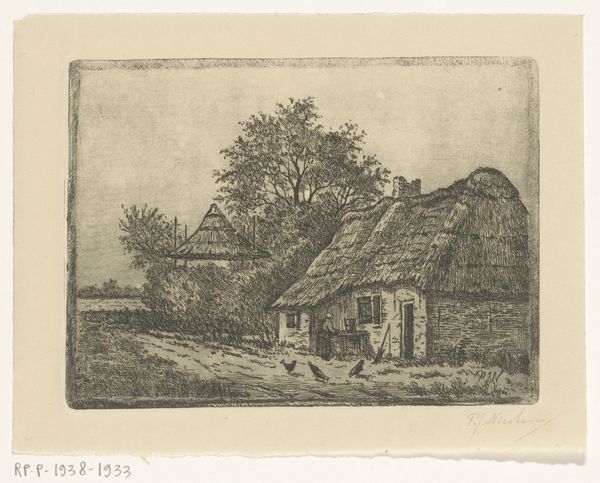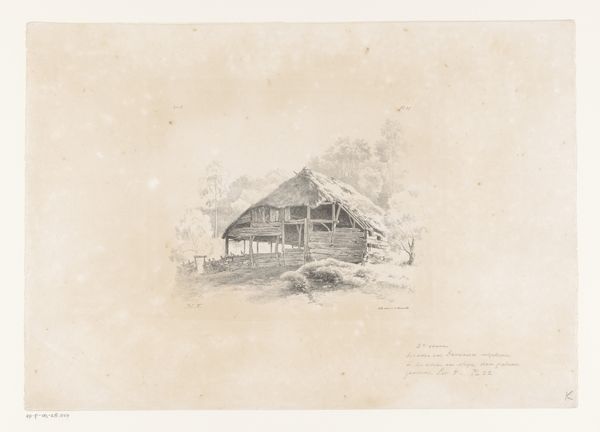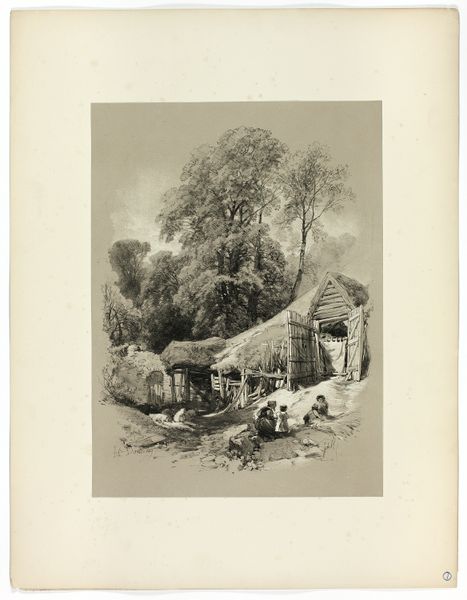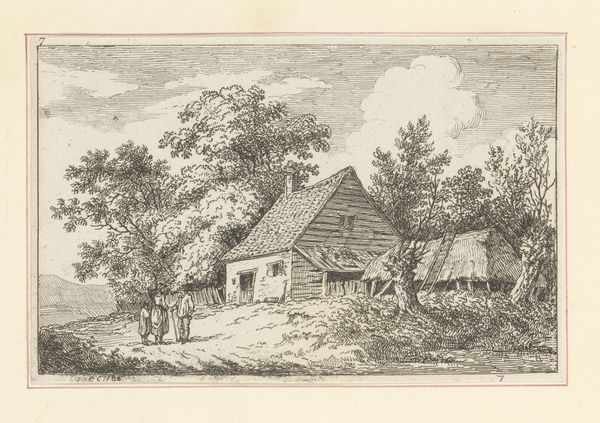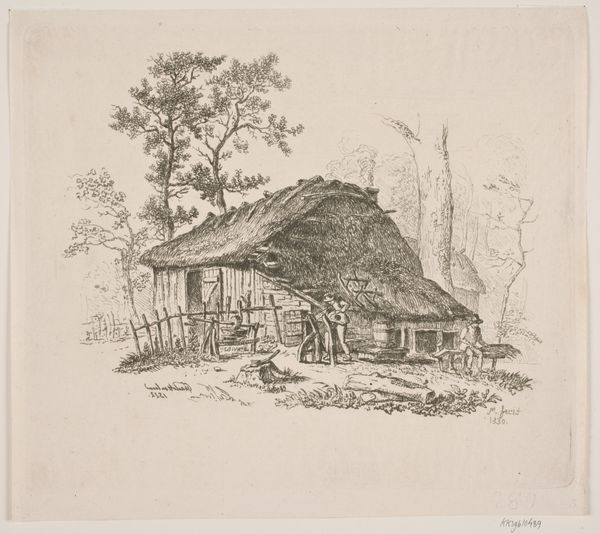
drawing, lithograph, print, paper
#
landscape illustration sketch
#
drawing
#
aged paper
#
toned paper
#
lithograph
# print
#
etching
#
paper
#
personal sketchbook
#
england
#
watercolour illustration
#
natural palette
#
pencil art
#
botanical art
#
watercolor
Dimensions: 384 × 287 mm (primary support); 560 × 430 mm (secondary support)
Copyright: Public Domain
This lithograph, called "Brunnen" is by James Duffield Harding. The lithography process is key to understanding the image's creation. Lithography involves drawing on a flat stone or metal plate with a greasy crayon, then treating the surface so that ink adheres only to the drawn areas. This printmaking technique allowed for a relative ease of reproduction, fitting into the broader context of 19th-century industrialization. The images themselves depict rustic buildings, perhaps humble dwellings or barns. There's a certain romanticism in Harding’s choice of subject matter, a focus on the vernacular architecture of the working landscape. The marks on the stone are reminiscent of drawings, but also of the hard labor involved in constructing buildings, and how these craft traditions are translated into a print. The print is also a commodity, an affordable image for a growing middle class. By paying attention to its materials, making, and social context, we realize that “Brunnen” is more than just a picturesque view, it is a window onto the intersection of art, labor, and commerce in the industrial age.
Comments
No comments
Be the first to comment and join the conversation on the ultimate creative platform.
